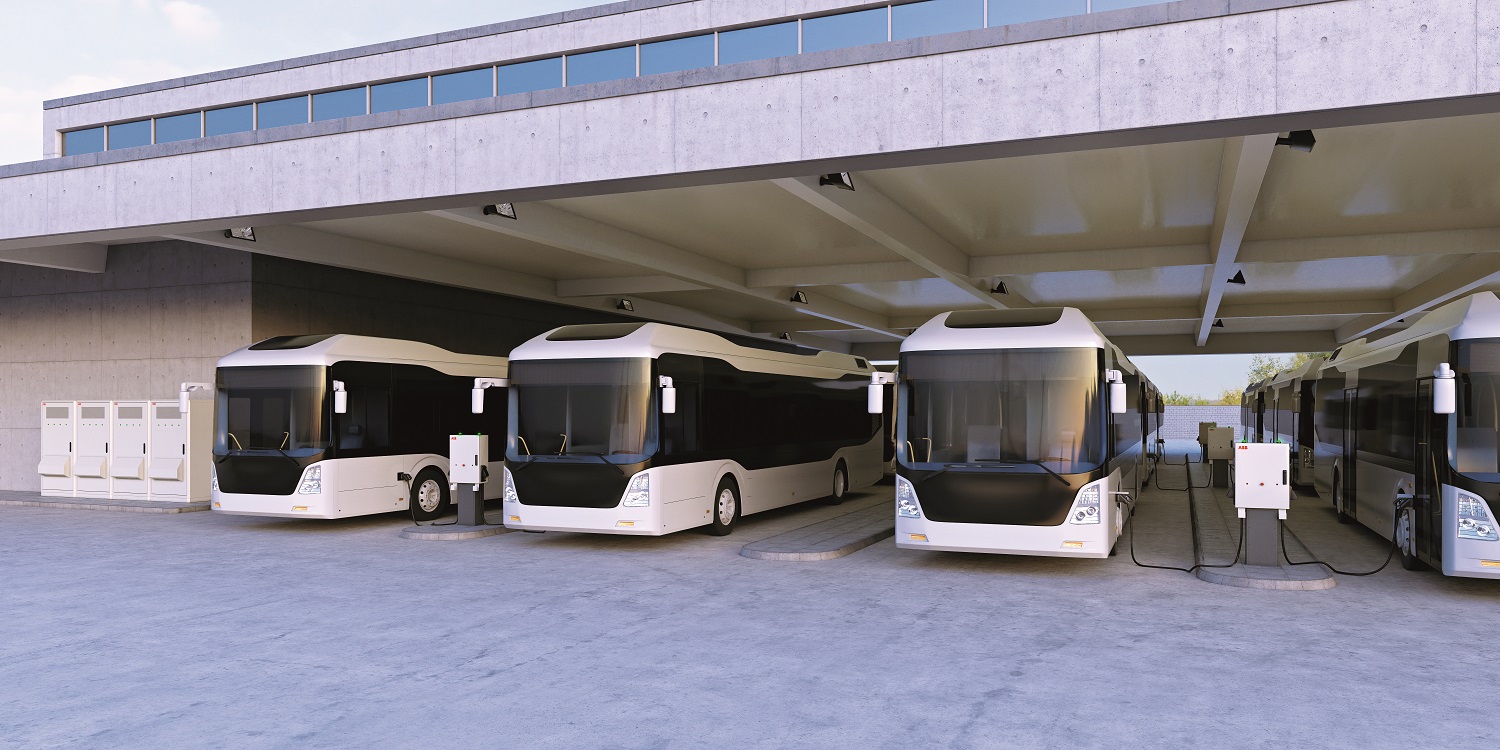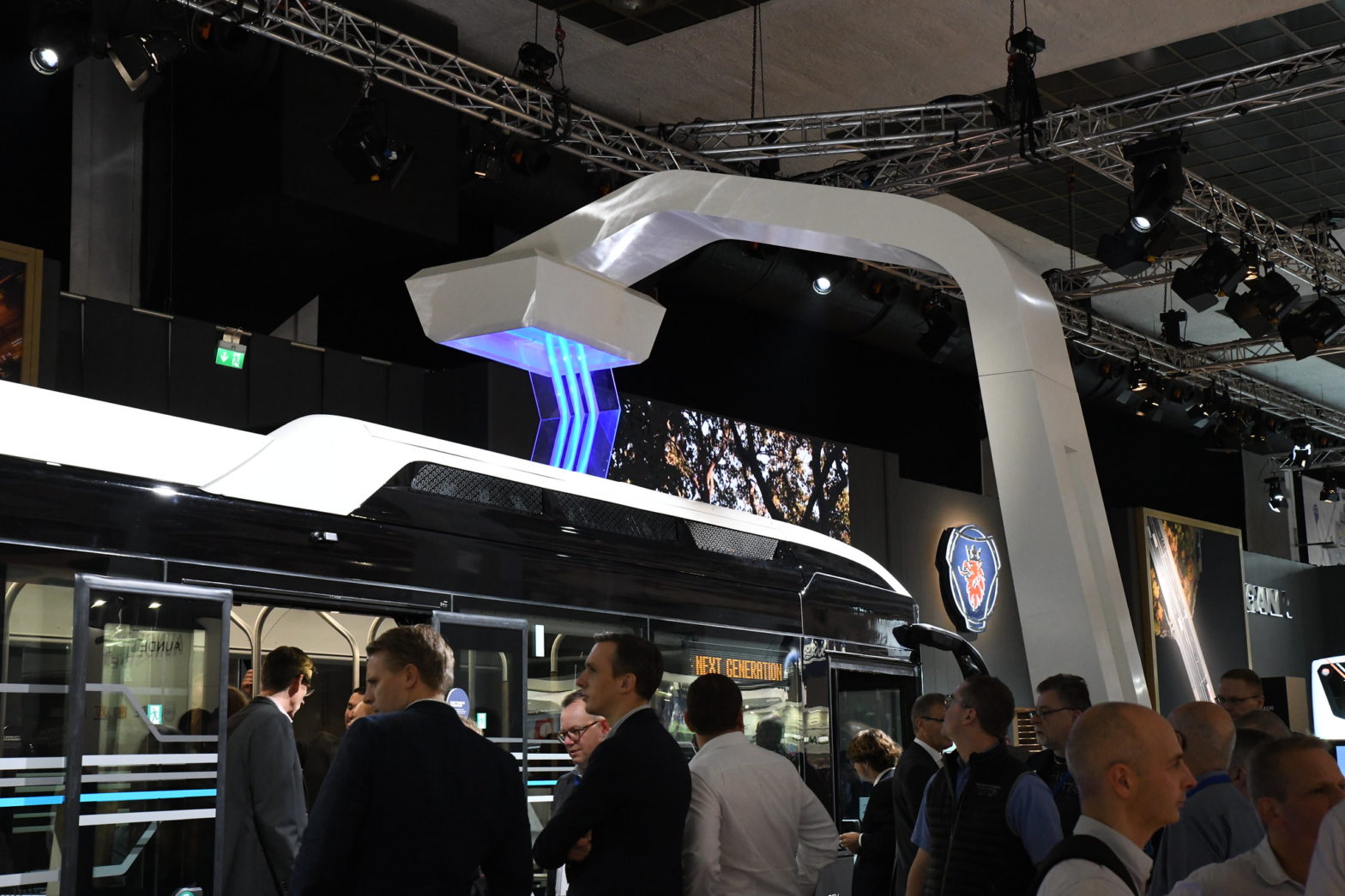
Photo: ABB
New ABB E-mobility charging solution to accelerate electric bus growth
06 June 2023
A new e-mobility power cabinet has been launched to enable the bus industry to decarbonise more quickly.
The HVC360 fleet charging solution, from global electric vehicle charging company ABB E-mobility, can be used for any site layout or use case.

“The HVC360 was really created from the feedback we received from operators,” says Mathijs Vaessen, Product Manager, ABB E-mobility, speaking prior to the announcement on World Environment Day. “There’s never enough space in bus depots for large chargers, especially in city centres.”
The new compact power cabinet enables the connection of up to four charging stations as far as 100 metres away, while the slim design allows installation back-to-back, side-to-side, or along a wall, and is also interoperable with a wide range of OEMs.
“It has already been tested and piloted from which we’ve learnt a lot and made adjustments to ensure we have a very robust charger,” adds Vaessen. “Public transit is far more demanding on chargers than what you typically see for public use cases.”
The power cabinet can allocate differing levels of power to each charging station, based on the number of vehicles plugged in or their charging requirements, while the unit also supports all charging interfaces simultaneously, from CCS to pantograph.
Global transport emissions
Although buses and trucks only account for 4 percent of vehicles, they contribute 40 percent of global transport emissions, meaning rapid electrification is key to further decarbonising the sector.
Slightly fewer than 66,000 electric buses were sold worldwide in 2022, around 4.5 percent of total bus sales. The electrified share of the bus market is rising quickly, however, by 20 percent in Europe and 27 percent in the US, with India accounting for more demand than the US and Europe combined, and the Chinese market acquiring 98 percent of all e-buses globally.
“We are very much contributing to the industry to accelerate the transition to electric transport,” says Vaessen. “Bus operators don’t electrify their complete fleet in one hit but we are now getting to the stage where these depots are going fully electric. We can really help with this power cabinet which is efficient, has a small footprint, is high quality, and robust, to help electrify a fleet, a crucial next step to achieve zero emission transport.”
Future-proofing
Jason Gies, Fleet & Transit VP, Product and Channel Management at ABB E-mobility, adds that an essential feature of the cabinet is that it is future-proofed: highly important to operators and fleet managers.
“As fleets bring more electric vehicles onboard, we can add more cabinets or dispensers in different formats,” he says. “We’re able to give a world-class power level to our customers’ vehicles today. And on top of that, as they increase their requirements, we’ll be able to meet those demands going forward.”
Pilots have already been conducted with customers across Europe through testing and using the power cabinet in real operations.

“We are using different charging interfaces – the pantograph in some projects and CCS connectors with either two or four outlets – and that feedback is very positive, especially about the footprint,” explains Vaessen. “Customers are really surprised that we get so much power out of one charging solution serving up to four buses.”
Gies believes the HVC360 is also able to easily adapt to different global markets. For example, in Europe it is not all that common to charge large bus fleets overnight but it is the leading technology in North America.
“That’s where our products are prepared and will be ready for the support of pantographs in parallel,” he says. “We make sure our products are safe to operate not only in Europe, but also on a global level.”
He says that ABB E-mobility is constantly evolving but that the centralisation and stabilisation of technologies is beginning to occur.
“This cabinet is half the size of our previous cabinet that did the same type of thing. I was at ACT Expo in North America two weeks ago and our customers’ reaction to it was very strong. They can see it is built for their environment, it can be rolled out in phases, it’s robust, and can grow with their needs.”
The power unit is backed up by the ABB E-mobility support system which underpins it. Digital tools and services are available for remote management and installation, combined with several layers of services and support. In addition, energy management solutions enable optimal charging performance and energy consumption, helping bus and truck fleets to operate more efficiently.
Gies adds: “There’s been a lot of key milestones for us in terms of progression. Innovation and collaboration go hand-in-hand. This partnership approach in developing the latest technology will really move the industry forward.”
HVC360 key features:
- Safety – designed to the highest international electrical, quality and safety standards, including IEC 61851-23
- Flexibility – intelligent design of air inlet and outlet mean chargers can be installed side-to-side and back-to-back. Connection of up to four charging stations, with power sharing across the four outlets, as far as 100m from the power cabinet
- Future-proof – upgradable power modules can support increasing battery ranges
- Broad application – supports all charging interfaces including Panto Down, Panto Up, CCS and combinations
- Connected – 24/7/36 remote monitoring and diagnostics, enabling updates over-the-air to support every new bus added to the fleet
- Robust – all-weather design including powder-coated stainless-steel enclosure
ABB E-mobility’s new HVC360 is available to view at booth 6E240 of the UITP Global Public Transport Summit.
Brought to you by:











